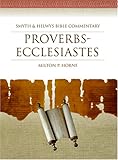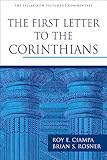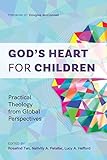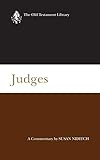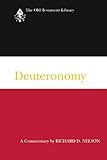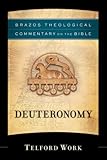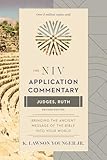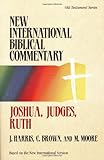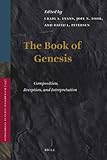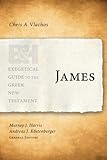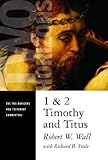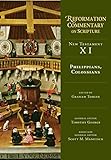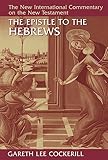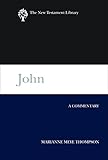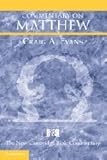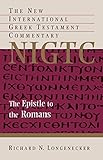How שׁוּב and נָחַם Contribute to Understanding the Meaning of Jeremiah 4:28, 15:6-7, 18:7-10 and 26:3, 13 and 19
Marsh, Allen Bythel
How שׁוּב and נָחַם Contribute to Understanding the Meaning of Jeremiah 4:28, 15:6-7, 18:7-10 and 26:3, 13 and 19 - Johannesburg South Africa South African Theological Seminary April 2018 - 311 pages PDF A4 Abstract, TOC
The purpose of this thesis was to explore how שׁוּב(shub) and נָחַם(nacham) contribute to understanding the meaning of Jeremiah 4:28, 15:6-7, 18:7-10 and 26:3, 13 and 19. This thesis affirms three hypotheses: (1) When Jeremiah 4:28, 15:6-7, 18:7-10 and 26:3, 13 and 19 are exegetically examined, the relationship between the Hebrew words שׁוּב(shub) and נָחַם(nacham) plays a vital role in understanding the overall message of those passages. (2) Jeremiah used שׁוּב(shub) and נָחַם(nacham) to demonstrate that God sometimes but not arbitrarily relents in response to the decisions of his people. (3) Based on a careful reading of the Hebrew Text, the relationship between שׁוּב(shub) and נָחַם(nacham) reveals that conditional propositions are real not only from man’s perspective but also from God’s. This thesis reveals how the covenantal relationship of שׁוּב(shub) and נָחַם(nacham)proved to contribute much to the understanding of the Jeremiah passages. For example, the covenantal relationship shows that the response of the nation had an influence on what God did or did not do, meaning that to some degree the future of the nation was in the hands of the people depending upon how they responded to God. God’s relenting was based on the nation repenting. Another example is when Jeremiah 18:1-10 is viewed in the context of covenant relationship, it was found that the main point of the passage shifted from the potter’s unilateral control and sovereignty over the clay to the flexibility of the potter to work with his clay. This thesis challenges the traditional notion that נָחַם(nacham) with God as its subject does not have literal meaning and is merely an anthropomorphic metaphor. This thesis provides a framework for metaphorical interpretation as it relates to anthropomorphisms. Instead of interpreting all anthropomorphisms in the same way and by the same standard, this thesis calls for a distinction to be made between material (physical) and immaterial (non-physical) anthropomorphic statements in the Old Testament and shows why they cannot be interpreted in the same way. For example, this thesis shows that if an immaterial anthropomorphism is not to some degree interpreted literally, then it loses its meaning and purpose. Furthermore, this thesis concludes that an anthropomorphic non-literal interpretation of God relenting נָחַם(nacham) is not necessary based on the exegesis of the Jeremiah passages and is not consistent with the evidence presented in the Old Testament. This thesis also offers a possible explanation as to why Christian tradition has largely dismissed God’s relenting as “anthropomorphic metaphor “despite the evidence from the exegesis and the Old Testament. This is accomplished by comparing the concrete thought of the ancient Hebrews with the abstract thought of the ancient Greeks and shows why the early Greek philosophers disliked anthropomorphic depictions of the gods and how that led the philosophers to develop an idea of the divine as utterly transcendent and in most cases separated and un-relatable to creation. This thesis continues the discussion by showing how this thought influenced some of the early Christian leaders in their mind-set and thinking about God as utterly transcendent, which resulted in non-literal views of God relenting.
Shuv (The Hebrew root)
Old Testament
Nacham (The Hebrew Word)
How שׁוּב and נָחַם Contribute to Understanding the Meaning of Jeremiah 4:28, 15:6-7, 18:7-10 and 26:3, 13 and 19 - Johannesburg South Africa South African Theological Seminary April 2018 - 311 pages PDF A4 Abstract, TOC
The purpose of this thesis was to explore how שׁוּב(shub) and נָחַם(nacham) contribute to understanding the meaning of Jeremiah 4:28, 15:6-7, 18:7-10 and 26:3, 13 and 19. This thesis affirms three hypotheses: (1) When Jeremiah 4:28, 15:6-7, 18:7-10 and 26:3, 13 and 19 are exegetically examined, the relationship between the Hebrew words שׁוּב(shub) and נָחַם(nacham) plays a vital role in understanding the overall message of those passages. (2) Jeremiah used שׁוּב(shub) and נָחַם(nacham) to demonstrate that God sometimes but not arbitrarily relents in response to the decisions of his people. (3) Based on a careful reading of the Hebrew Text, the relationship between שׁוּב(shub) and נָחַם(nacham) reveals that conditional propositions are real not only from man’s perspective but also from God’s. This thesis reveals how the covenantal relationship of שׁוּב(shub) and נָחַם(nacham)proved to contribute much to the understanding of the Jeremiah passages. For example, the covenantal relationship shows that the response of the nation had an influence on what God did or did not do, meaning that to some degree the future of the nation was in the hands of the people depending upon how they responded to God. God’s relenting was based on the nation repenting. Another example is when Jeremiah 18:1-10 is viewed in the context of covenant relationship, it was found that the main point of the passage shifted from the potter’s unilateral control and sovereignty over the clay to the flexibility of the potter to work with his clay. This thesis challenges the traditional notion that נָחַם(nacham) with God as its subject does not have literal meaning and is merely an anthropomorphic metaphor. This thesis provides a framework for metaphorical interpretation as it relates to anthropomorphisms. Instead of interpreting all anthropomorphisms in the same way and by the same standard, this thesis calls for a distinction to be made between material (physical) and immaterial (non-physical) anthropomorphic statements in the Old Testament and shows why they cannot be interpreted in the same way. For example, this thesis shows that if an immaterial anthropomorphism is not to some degree interpreted literally, then it loses its meaning and purpose. Furthermore, this thesis concludes that an anthropomorphic non-literal interpretation of God relenting נָחַם(nacham) is not necessary based on the exegesis of the Jeremiah passages and is not consistent with the evidence presented in the Old Testament. This thesis also offers a possible explanation as to why Christian tradition has largely dismissed God’s relenting as “anthropomorphic metaphor “despite the evidence from the exegesis and the Old Testament. This is accomplished by comparing the concrete thought of the ancient Hebrews with the abstract thought of the ancient Greeks and shows why the early Greek philosophers disliked anthropomorphic depictions of the gods and how that led the philosophers to develop an idea of the divine as utterly transcendent and in most cases separated and un-relatable to creation. This thesis continues the discussion by showing how this thought influenced some of the early Christian leaders in their mind-set and thinking about God as utterly transcendent, which resulted in non-literal views of God relenting.
Shuv (The Hebrew root)
Old Testament
Nacham (The Hebrew Word)

